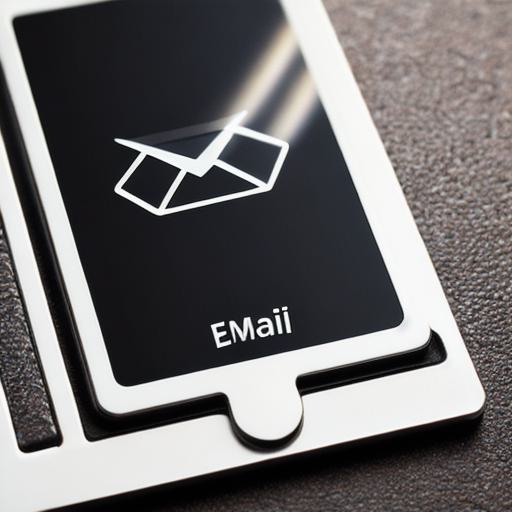In this chapter, we’ll discuss some advanced email marketing techniques that can help you take your email campaigns to the next level. These techniques include:
- Personalization
- Automation
- Segmentation
- Testing and Optimization
- Gamification
- Social Media Integration
- Geo-Targeting
- Drip Campaigns
- SMS Marketing

1. Personalization
Personalization is the process of tailoring your email content to the specific interests, needs, and preferences of your subscribers. By using personalization in your email campaigns, you can create a more engaging and relevant experience for your audience, which can help improve open rates, click-through rates, and conversions.
Here are some ways to personalize your emails:
- Use the recipient’s name in the subject line and email content: This is one of the most basic forms of personalization. By using the recipient’s name in your emails, you can make them feel more personalized and relevant.
- Segment your audience based on demographics, interests, or behavior: By segmenting your audience based on demographics (e.g., age, gender), interests (e.g., hobbies, preferences), or behavior (e.g., purchase history), you can create more targeted and relevant email campaigns that speak directly to the needs and preferences of each group.
- Use dynamic content: Dynamic content allows you to display different content in your emails based on the recipient’s actions or preferences. For example, if a subscriber has previously clicked on a link related to a particular product or service, you can use dynamic content to display more information about that product or service in their next email.
- Use A/B testing: By using A/B testing, you can compare two different versions of your email content (e.g., subject lines, email content) and see which one drives the most engagement and conversions. This can help you optimize your emails for maximum effectiveness.
- Offer personalized recommendations: By analyzing your subscribers’ past behavior and interests, you can offer them personalized product or service recommendations that are more likely to resonate with them.
2. Automation
Email automation is the process of using software tools to automatically send emails based on predefined triggers or rules. By automating your email campaigns, you can save time and resources while still delivering highly personalized and relevant content to your audience.
Here are some ways to use email automation:
- Welcome series: Send a welcome series of emails to new subscribers that includes an introduction to your brand, your products or services, and any promotions or discounts you’re currently offering.
- Abandoned cart campaigns: Send automated emails to people who have added items to their online shopping cart but haven’t completed the purchase. These emails can include personalized product recommendations, discounts, or other incentives to encourage the recipient to complete their purchase.
- Drip campaigns: Drip campaigns are a series of automated emails that are sent over a period of time (e.g., over the course of several weeks or months). These emails can be used to provide educational content, promote products or services, or offer exclusive discounts or promotions.
- Lead nurturing: Use email automation to nurture leads who have expressed interest in your products or services but haven’t yet made a purchase. This can include providing educational content, offering personalized product recommendations, and sending automated follow-up emails to keep the conversation going.
- Special occasions: Send automated emails to subscribers on special occasions (e.g., birthdays, anniversaries) that include personalized greetings and relevant offers or promotions.
3. Segmentation
Segmentation is the process of dividing your email list into smaller groups based on specific criteria such as demographics, interests, behavior, or location. By segmenting your audience, you can create more targeted and relevant email campaigns that speak directly to the needs and preferences of each group.
Here are some ways to segment your email list:
- Demographics: Segment your audience based on demographic information such as age, gender, income level, or education level.
- Interests: Segment your audience based on their interests or hobbies (e.g., fitness enthusiasts, bookworms).
- Behavior: Segment your audience based on their past behavior or interactions with your brand (e.g., people who have made a purchase in the past, people who have signed up for a free trial).
- Geography: Segment your audience based on their location (e.g., people in specific cities, countries, or regions).
- Psychographics: Segment your audience based on their personality traits or lifestyles (e.g., people who value sustainability, people who are health-conscious).
4. Testing and Optimization
Testing and optimization is the process of continually testing different versions of your email content (e.g., subject lines, email content) and analyzing the results to see which one drives the most engagement and conversions. By optimizing your emails, you can improve their effectiveness over time and maximize their impact on your business goals.
Here are some ways to test and optimize your emails:
- A/B testing: Compare two different versions of your email content (e.g., subject lines, email content) and see which one drives the most engagement and conversions.
- Multivariate testing: Compare multiple variations of your email content simultaneously to see which combination drives the best results.
- Split testing: Test different groups of subscribers with different versions of your email content to see which version resonates best with each group.
- Open rate optimization: Use A/B testing to test different subject lines and email content to see which one drives the highest open rates.
- Click-through rate optimization: Use A/B testing to test different calls-to-action and email content to see which one drives the highest click-through rates.
- Conversion rate optimization: Use A/B testing to test different offers or promotions to see which one drives the highest conversion rates.
5. Gamification
Gamification is the process of incorporating game elements (e.g., points, badges, leaderboards) into your email campaigns to make them more engaging and interactive. By using gamification in your emails, you can create a more fun and competitive experience for your audience, which can help improve open rates, click-through rates, and conversions.
A PLACE FOR A PICTURE #2
Here are some ways to use gamification in your emails:
- Loyalty programs: Create a loyalty program that rewards subscribers for engaging with your brand or making purchases. This can include offering points, badges, or other incentives for completing specific tasks or reaching certain milestones.
- Contests and giveaways: Hold contests or giveaways that require subscribers to engage with your brand in some way (e.g., sharing your content on social media, answering a question). This can help increase engagement and drive more conversions.
- Scavenger hunts: Create a scavenger hunt that requires subscribers to complete specific tasks or find hidden information within your emails or website. This can be a fun way to engage your audience and encourage them to explore your brand further.
- Interactive quizzes: Create interactive quizzes that test subscribers’ knowledge of your products or services or their interests. This can be a fun way to gather information about your audience and provide personalized content.
6. Social Media Integration
Social media integration is the process of incorporating social media elements (e.g., share buttons, social media feeds) into your email campaigns to make them more interactive and engaging. By using social media integration in your emails, you can encourage subscribers to engage with your brand on social media and drive more traffic to your website or social media profiles.
Here are some ways to use social media integration in your emails:
- Share buttons: Add share buttons to your email content that allow subscribers to easily share your content on social media platforms such as Facebook, Twitter, or LinkedIn.
- Social media feeds: Include social media feeds within your email campaigns that showcase user-generated content (e.g., photos, videos) or promote your brand’s social media presence.
- Social media contests and giveaways: Hold contests or giveaways that require subscribers to engage with your brand on social media (e.g., sharing your content, tagging friends). This can help increase engagement and drive more traffic to your social media profiles.
- Cross-promotions: Promote your social media profiles within your email campaigns by including links to your profiles or promoting your social media content within your emails.
7. Personalization
Personalization is the process of customizing your email content and messaging to match the interests, preferences, and behavior of individual subscribers. By using personalization in your emails, you can create a more relevant and engaging experience for your audience, which can help improve open rates, click-through rates, and conversions.
Here are some ways to use personalization in your emails:
- Dynamic content: Use dynamic content to customize the content of your emails based on subscriber information (e.g., past purchases, interests).
- Personalized subject lines: Use subscriber data to create personalized subject lines that address the recipient by name or refer to their specific interests or behavior.
- A/B testing: Use A/B testing to test different versions of your email content and messaging with different subgroups of your audience to see which version resonates best with each group.
- Segmentation: Segment your audience based on their interests, preferences, or behavior and create personalized email campaigns for each segment.
- Behavioral triggers: Use behavioral triggers (e.g., abandoned cart reminders, birthday offers) to send personalized emails that are timely and relevant to the subscriber’s behavior or preferences.




